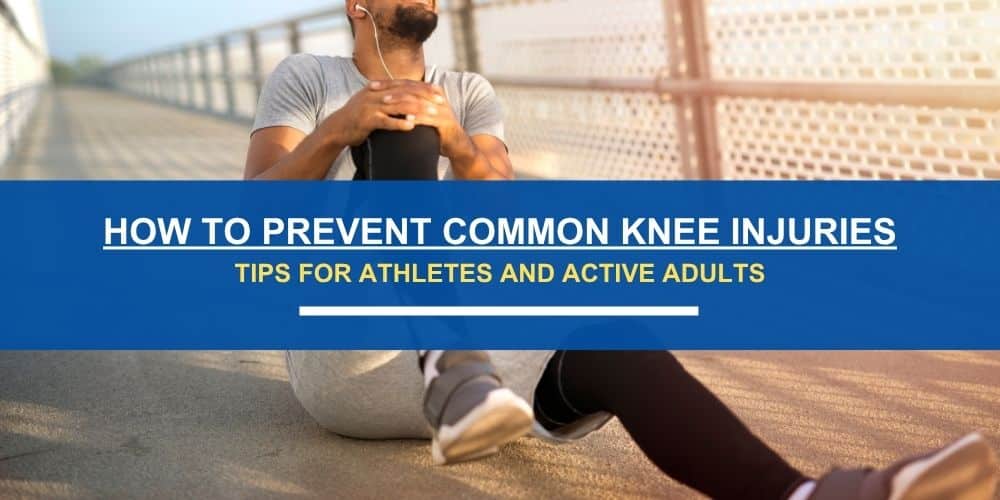Knee injuries rank among the most common reasons people visit orthopedic specialists, especially those who lead active lifestyles. Whether you’re a professional athlete, a weekend warrior, or simply enjoy regular exercise, your knees play a vital role in your mobility and overall quality of life. Unfortunately, the knee joint is also susceptible to injuries due to its complex structure and the significant stress it endures during physical activities.
The good news? Many knee injuries can be prevented with proper care, awareness, and conditioning. In this blog, we’ll explore the most common types of knee injuries and provide practical tips to help you keep your knees strong and healthy.
Understanding the Knee Joint
The knee is the largest and one of the most complex joints in the body. It connects the thigh bone (femur) to the shin bone (tibia) and includes the kneecap (patella). Several ligaments, tendons, and cartilage structures like the menisci, help stabilize and cushion the knee during movement.
Common Types of Knee Injuries
- Ligament Injuries: Tears or sprains of the anterior cruciate ligament (ACL), posterior cruciate ligament (PCL), or collateral ligaments often occur during sudden twists, stops, or impacts.
- Meniscus Tears: The menisci act as shock absorbers. Twisting or heavy lifting can cause these cartilage pads to tear, resulting in pain and swelling.
- Tendinitis: Overuse of the knee can inflame tendons, especially the patellar tendon (connecting the kneecap to the shin bone).
- Bursitis: Inflammation of the bursae (small fluid-filled sacs) causes swelling and tenderness.
Tips to Prevent Knee Injuries
1. Strengthen Your Muscles
Strong muscles around the knee, especially the quadriceps and hamstrings, provide better support and reduce stress on ligaments and cartilage. Incorporate exercises like squats, lunges, and leg presses into your routine.
2. Warm Up and Stretch
Always warm up before physical activity to increase blood flow and flexibility. Stretch your leg muscles gently to prepare your knees for movement.
3. Wear Proper Footwear
Supportive, well-fitting shoes that match your activity type can prevent improper knee alignment and reduce impact.
4. Practice Proper Technique
Whether running, jumping, or lifting, using correct form is critical to avoid unnecessary strain. If you’re unsure, consider working with a coach or physical therapist.
5. Avoid Sudden Increases in Activity
Gradually increase the intensity and duration of your workouts. Sudden spikes can overload your knees and lead to injury.
6. Maintain a Healthy Weight
Extra body weight increases stress on your knees, making injury more likely and recovery longer.
When to See a Doctor
If you experience persistent knee pain, swelling, instability, or difficulty moving your knee, seek medical attention promptly. Early diagnosis can prevent further damage and help you get the right treatment. Visit City Orthopaedics and Sports Medicine to diagnose your pain.
In Conclusion:
Your knees are essential for an active lifestyle, but they require care and attention to stay injury-free. By strengthening muscles, using proper technique, and listening to your body, you can reduce your risk of knee injuries and keep moving confidently.
Frequently Asked Questions
1. What are the most common types of knee injuries?
The most common knee injuries include ligament tears (such as ACL and PCL), meniscus tears, tendinitis, and bursitis. These injuries often result from sports, overuse, or sudden movements.
2. How can I prevent knee injuries during exercise?
You can prevent knee injuries by strengthening the muscles around the knee, warming up and stretching before activity, wearing proper footwear, using correct techniques, and avoiding sudden increases in workout intensity.
3. When should I see a doctor for knee pain?
You should see a doctor if you experience persistent pain, swelling, instability, or difficulty moving your knee. Early diagnosis can help prevent further damage and improve recovery.
4. Why are strong muscles important for knee health?
Strong quadriceps and hamstrings support the knee joint, reduce strain on ligaments and cartilage, and help absorb impact during movement.
5. Does weight affect knee injury risk?
Yes, excess body weight puts more stress on the knees, increasing the risk of injury and slowing recovery time. Maintaining a healthy weight helps protect your knee joints.





